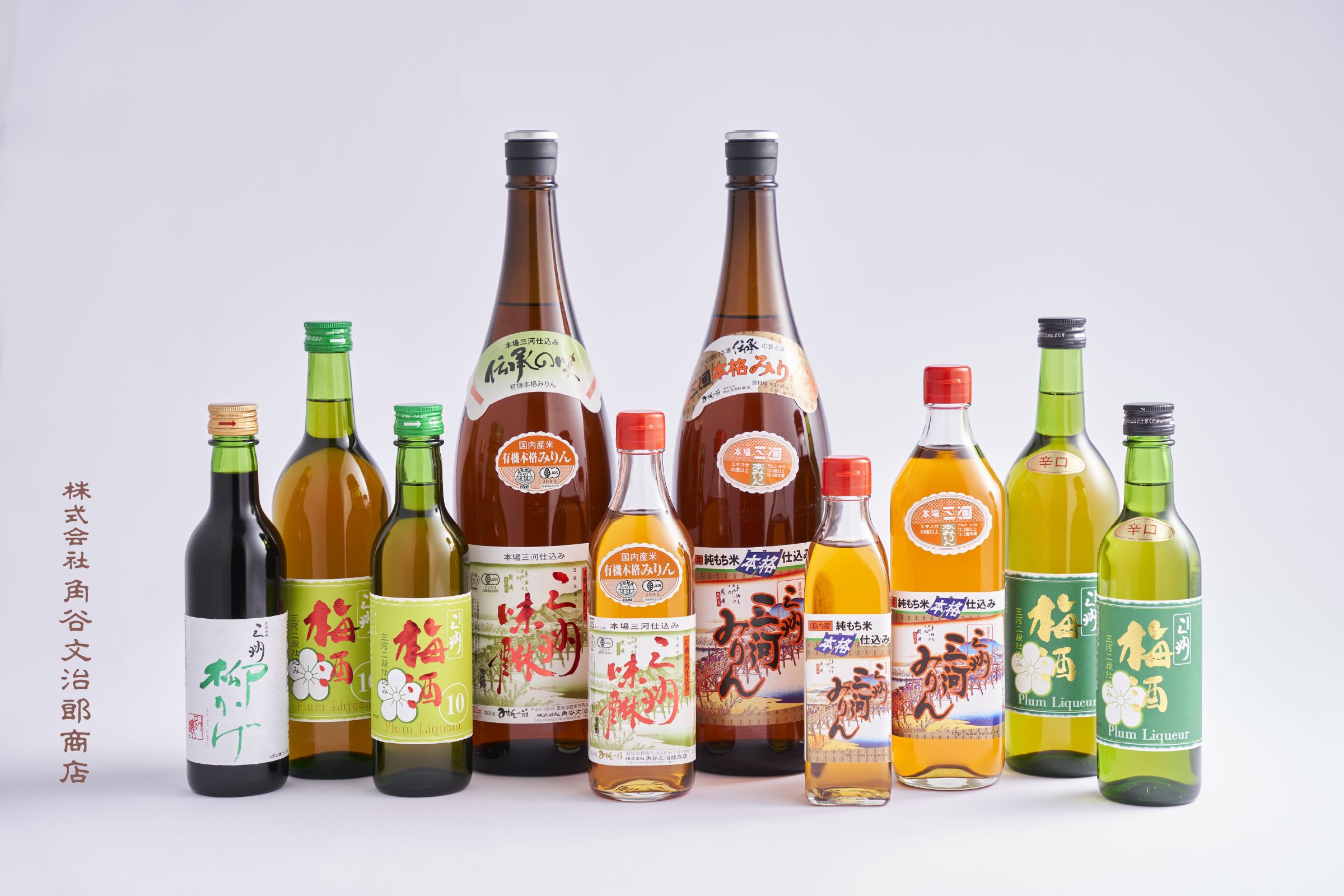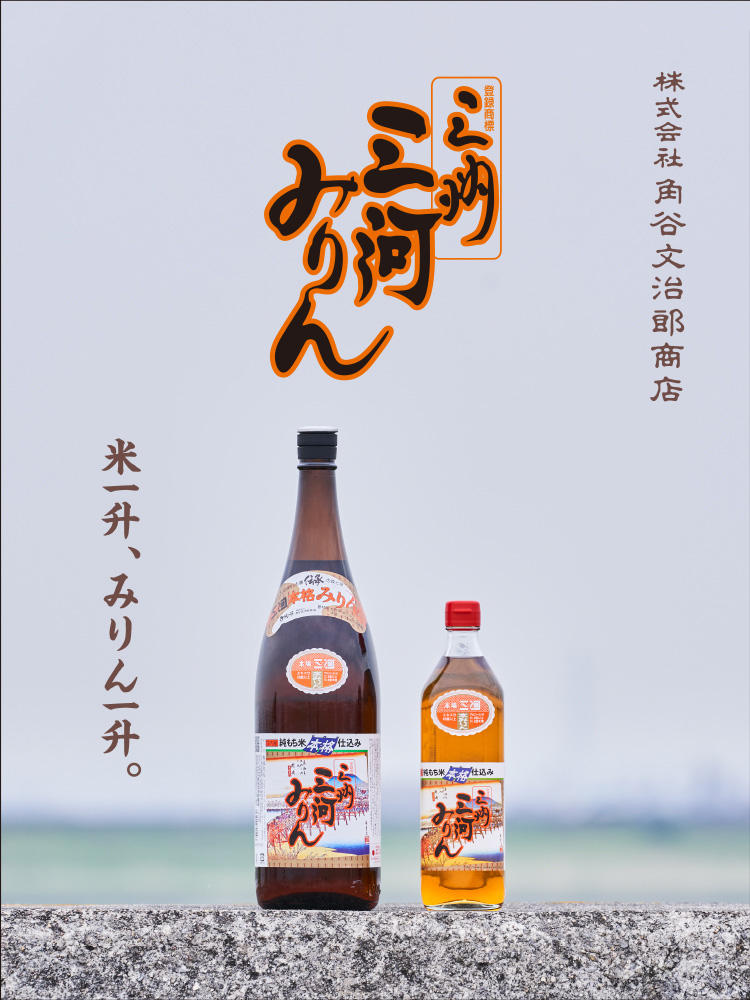
Sanshu
Mikawa Mirin
Sumiya Bunjiro Brewery Co., Ltd.
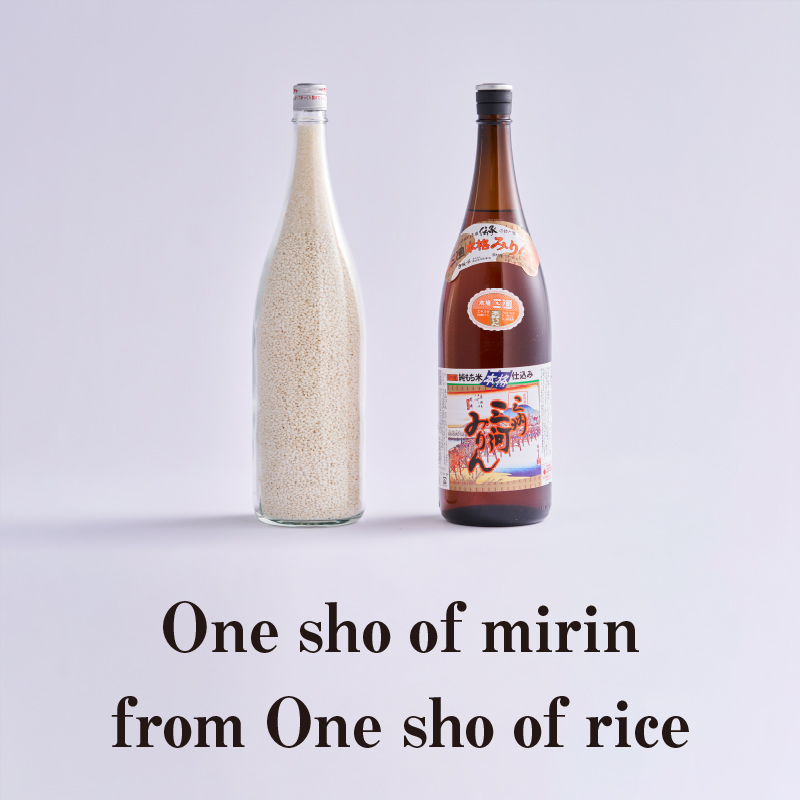
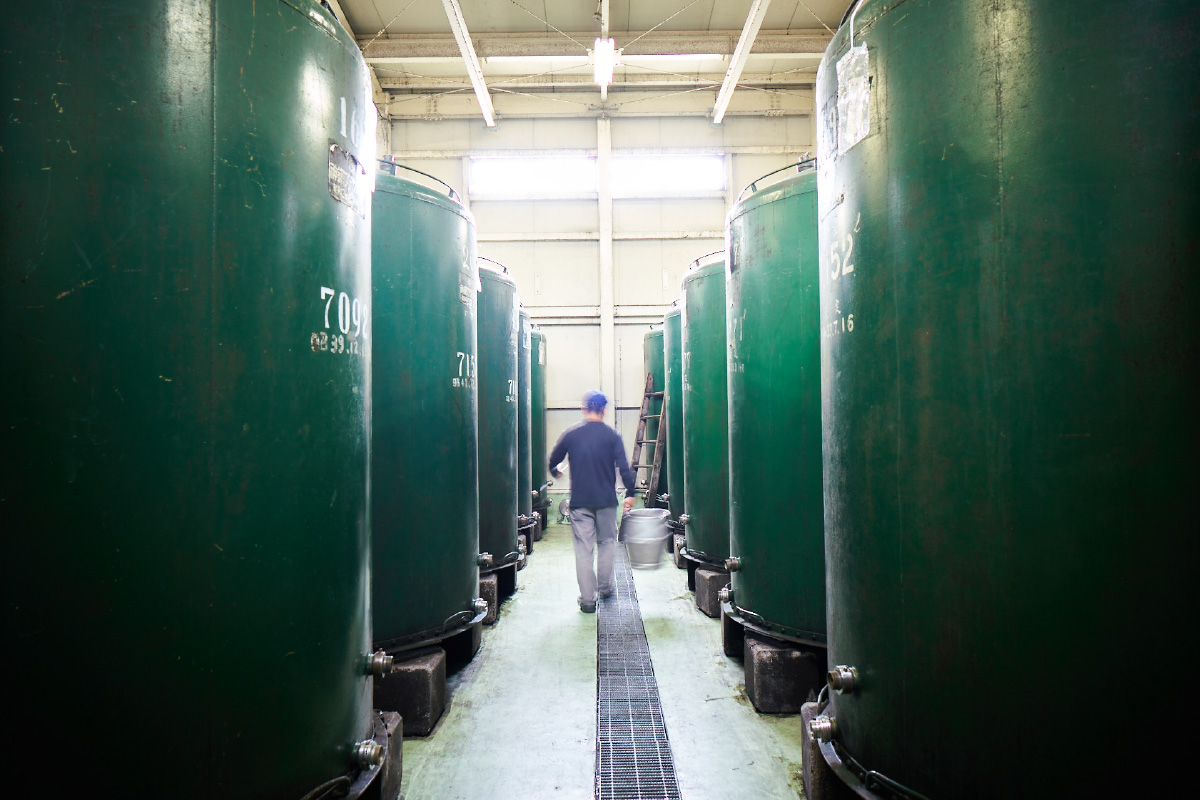
Making food taste
delicious while
also tasting good
simply by itself
Sanshu Mikawa Mirin, the brand name of our mirin (i.e., sweet cooking rice wine, in Japanese),has always had only three ingredients: glutinous rice, koji (rice malt), and shochu (Japanese distilled hard liquor). The mirin liquid, made of steamed glutinous rice brewed together with koji and shochu, is bottled after a long period of aging. The bottled liquid is, in other words, liquor made from rice with 14% alcohol content. With just one sip, you can imbibe a real sense of its mellow, full-bodied flavor.
As all of these ingredients come from rice, Sumiya Bunjiro Brewery Co., Ltd (hereinafter referred to as "Sumiya Bunjiro") has, since its founding in 1910, maintained the use of a traditional brewing method that maximizes the taste of rice. The rice that we use for our mirin products is carefully selected from specific rice production areas in Japan. We mill the rice completely in-house. We also brew koji in-house via a method that is most suitable for making mirin,
along with brewing shochu in such a way that the final mirin emits a rich aroma. We spend a good amount of time cooking our rice so that we can bring out the rice’s innate umami (i.e., the essence of its deliciousness) to an extent that is not possible through a normal steaming cooking method. The reason why we can do this is because we continue to apply a traditional method that makes effective use of the inherent flavor of rice. The mellow and deep natural sweetness is the biggest feature of Sanshu Mikawa Mirin.
Our delicious mirin, which tastes good even when consumed directly by itself, enhances the taste of cooked food by bringing out the natural flavor of the ingredients used for cooking that food. It is not a "flavoring"ーit functions as a "secret ingredient" that can further enrich the palatability of dishes that decorate the dinner table.
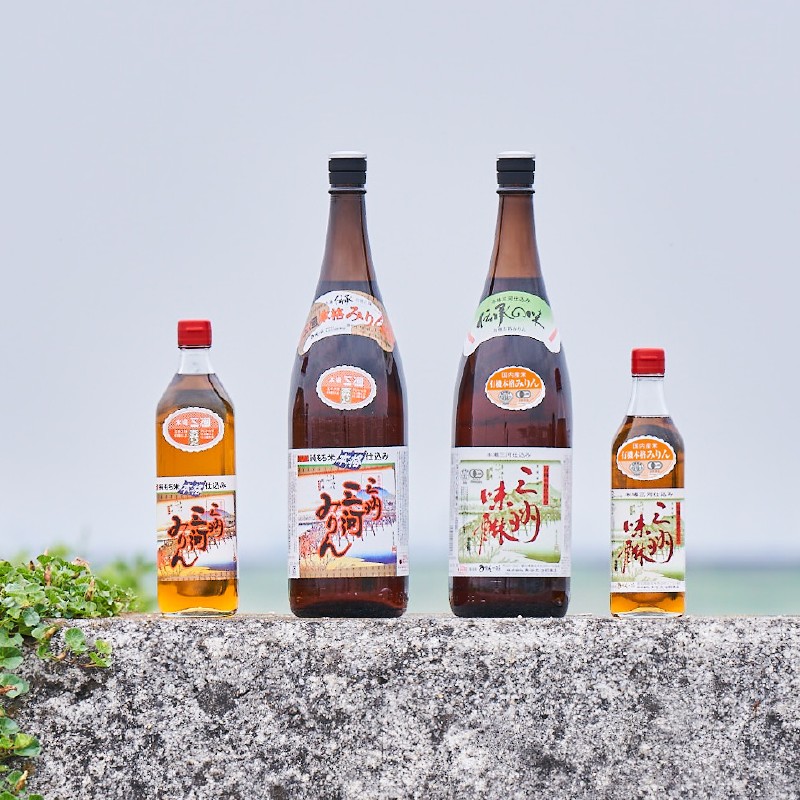
A history of mirin
The origin of mirin dates back many, many years. There are various documents that mention the history of mirin, saying that it was already being developed during Japan’s Sengoku period (1467‒1615).
Regarding the place of origin, there are mainly two differing views. Some historians hold the view that mirin originated in Japan, while others think that it was brought from China. Those that support the former think that mirin was developed through the process of adding shochu to ancient liquors, such as nerizake and hakushu, for the purpose of preventing these liquors from decaying. On the other hand, those that believe that mirin was brought from China point to a sweet liquor named meerin, brought to Japan a long time ago. In some old books, there are also notes about an ancient liquor with a name pronounced "meerin-shu" or "beerin-shu," which suggests from the Japanese characters used for the name that it was a high-class liquor with mild sweetness.
It would be fair to say that mirin played a role in contributing to the building of Japanese food culture when mirin’s manufacturing method was established during Japan’s Edo period (1603‒1868). The foundation of washoku (Japanese- style food) was cemented when mirin began to be used in combination with other brewed seasonings, such as shoyu (soy sauce) and miso (fermented soybean paste) bean, as well as with kelp and bonito flakes, among others. The umami taste enhanced by mirin was well received, and its function to give food a shine, glaze, or extra aroma drastically helped transform the way people were enjoying eating cooked meals.
In addition, when social conditions stabilized during Japan’s Meiji and Taisho periods, mirin began to be valued also as a nutritious drink just by itself or as a useful seasoning for Japanese-style cooking. It was from the end of Japan’s Taisho period to the beginning of the Showa period that full-bodied mirin as we know it today began to be produced.
However, when World War II began, the production of mirin was banned for eight years from 1943 due to a deficiency in rice supply. Although this ban was lifted after the end of the war, high liquor tax was then imposed on mirin, as it was regarded as a luxury item under a severe food shortage situation that continued in the early years of postwar Japan. By 1962, the high tax rate that had been imposed on mirin was lowered several times. It was also around this period when alternative mirin-like products that could be commercialized without need for manufacturers to pay high liquor tax began to appear and eventually dominate the domestic market.
Sanshu Mikawa Mirin, which contains about 14% alcohol, is classified as honmirinーa so-called "true" form of mirinーunder Japanese law. According to the current definition of honmirin, this includes products that are made of grains other than glutinous rice; that use other types of brewed alcohol; that have sugars added up to 250% of the total weight of rice used; and that are manufactured via a short period of heat treatment. While any mirin product that meets this definition can all be sold as honmirin, liquid sweeteners that do not contain alcohol and that are manufactured using chemical sweetening agents, such as with glucose, are also called "mirin-style seasonings" and have been categorized separately from honmirin since 1975.
While many production methods have been developed and changed over the years, since its founding in 1910, Sumiya Bunjiro has remained consistent in the manufacturing of its products by using a traditional brewing method. This is an old method that uses only glutinous rice, koji, and shochu made from rice. There is no other normal steamed rice cooking method that can extract the umami essence in rice so richly to this extent.”
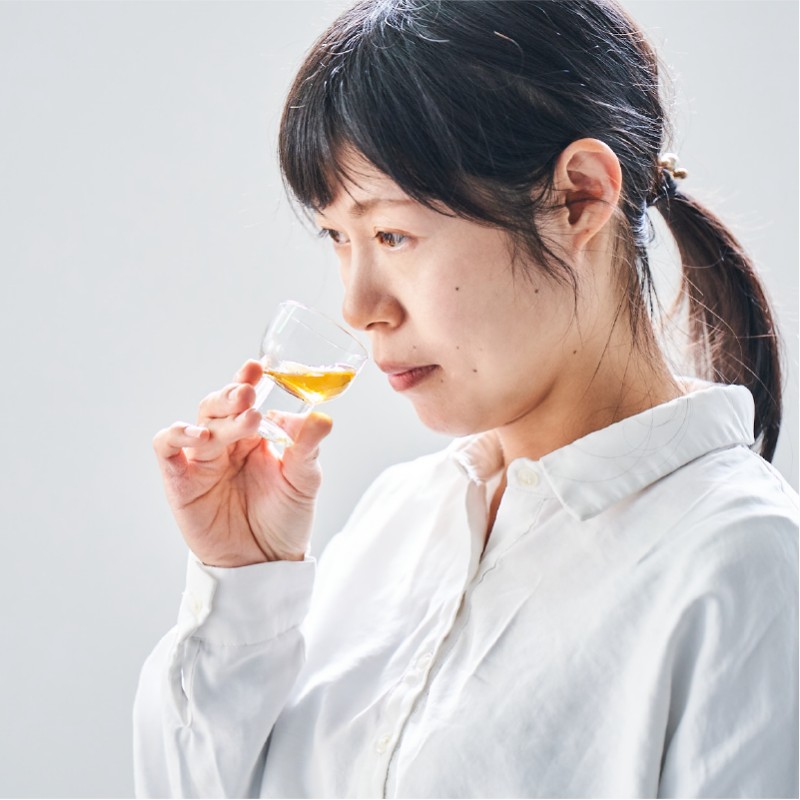
The key factors
that nurture
the uniqueness of
Sanshu Mikawa Mirin
1. Insistence on raw materials
The rice used at Sumiya Bunjiro is 100% made in Japan and is grown at designated domestic production areas. We use glutinous rice grown with great care by rice producers with whom we have a long relationship. We mill all the rice ourselves. Koji and shochu are also prepared in-house in order to maintain optimal conditions for mirin production.
2. Traditional brewing method
We prepare glutinous rice, koji, and shochu so as to make moromi (fermentation mash). This takes about three months to brew and two years to age. These brewing and aging processes are driven by the invisible activities of the microorganisms that nurture sweetness and umami. These microorganisms, which we cannot see with our bare eyes, brew the raw materials in a suitable climate, found here in Aichi Prefecture, in the Mikawa region, bringing out the inherently rich flavor of the glutinous rice to the fullest.
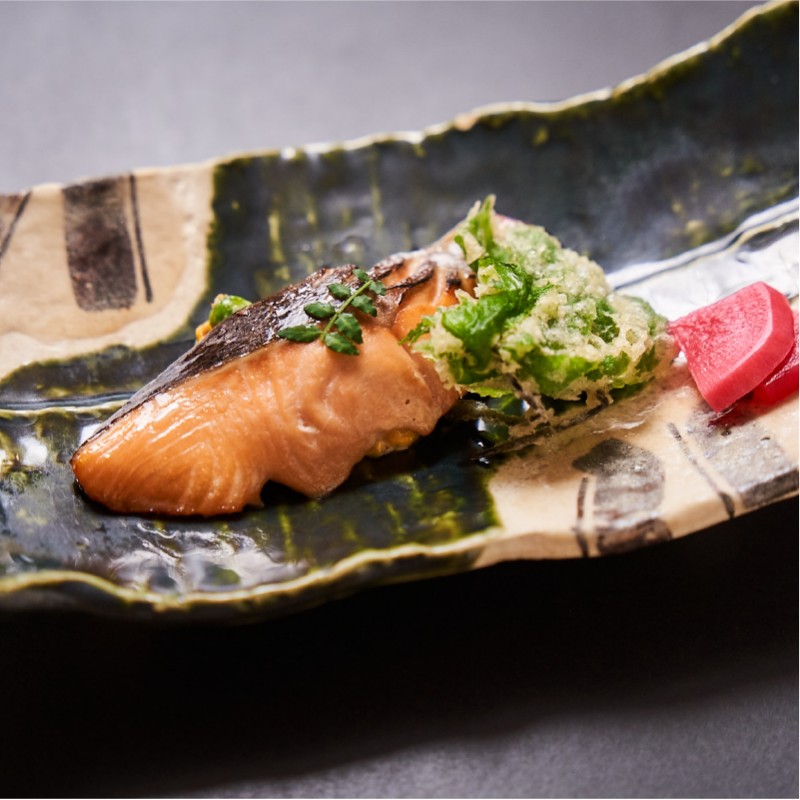
Sanshu Mikawa Mirin:
How it works
Adds a sparkle to cooked food
Multiple substances in rice that contribute to sweetening form a film when the moist elements of these substances fuse together by heating, giving the cooked food a shine or glaze.
Brings out the rich flavor and umami
When alcohol molecules with excellent permeability penetrate into the tissues of food ingredients, they help attract other molecules, resulting in better taste penetration. In addition, the heat applied while cooking evaporates the alcohol, leaving behind the amino acids that form the source of the umami, allowing the ingredients to further enrich their tastiness.
Removes innocuous food odors
Some substances contained in mirin have a deodorant effect that become active through saccharification and aging. In addition to that, when the alcohol in mirin evaporates during heating, specific substances that can emit innocuous odors evaporate along with the alcohol as well.
Prevents cooked food from crumbling
When alcohol permeates food ingredients, it strengthens their contents so that they do not easily crumble during cooking. Moreover, because mirin can also prevent food ingredients from hardening over time, it is an ideal seasoning agent for preparing make-ahead types of pre-cooked side dishes.
Elegant and mellow sweetness
Compared to sugar, which has only one type of substance (sucrose) that produces the sweetening effect, Sanshu Mikawa Mirin is condensed with the sweetness of glutinous rice, which contains various sweetening agents, such as glucose and oligosaccharideーswhich help to add a deeper sweetness to the cooked food.
Our Declaration Regarding
the Environment
Sanshu Mikawa Mirin’s distinct feature can be said to be its ability to draw out the deliciousness of rice to the fullest extent.
Rice, which has long supported the dietary life of the Japanese people, is now being consumed in decreasing quantities due to the diversification of food and changing lifestyles. In addition, the aging of farmers and increasing cases of abandoned farmland are also becoming issues of social concern in Japan. We must, however, not forget the significance of rice paddies for their essential role in preserving our precious environment by acting as cradles for a variety of living creatures, as well as in preventing temperature increase via the cooling effect of the wind that blows over the surface of the water covering rice paddies.
What we must keep in mind going forward is to maintain the diverse food culture that has been fostered by our rich natural environment and to pass this on to future generations. In order to do this, it is vital for all of us to protect and preserve our current natural environment, including our rice paddies.
As our commitment to give back to our environment, which we are so very grateful for, Sumiya Bunjiro Shoten will continue engaging in the following two practices during the course of its business.
1. Using rice grown with care by farmers, we will always take the time to carefully produce delicious mirin that can brighten the table of every household. By choosing Sumiya Bunjiro Shoten, you are supporting the earnest dedication of our partner farmers, and you helping to create a virtuous cycle of preserving the rural landscape and protecting the environment.
2. We will continue our efforts to reduce food waste to as close to zero as possible, through actions such as the effective use of mirin lees, which is a byproduct of mirin. At the same time, we will promote manufacturing that is more environmentally friendly by making more-efficient use of resources such as water and electricity.
